Along with the completion of the tower of Jesus Christ and construction of the columns supporting the towers on the Glory façade, which will be the main entrance to the Basilica from Carrer de Mallorca, work is currently under way at the Temple to build the Chapel of the Assumption and the adjoining section of the cloister, which Gaudí envisioned as a contemplative setting away from the city noise.
A chapel dedicated to the Virgin Mary
In the middle of the cloister that runs parallel to Carrer de Provença, behind the apse, Antoni Gaudí decided to build a chapel with a square floor plan and an exterior praising Virgin Mary. One of the most characteristic elements of the chapel is the 30-metre blue dome, which represents the Virgin Mary’s mantle, held up by four angels. As if a cape offering shelter against cold and rain, the mantle symbolises Mary’s protection for those in need.
To design the dome, Gaudí drew on the Virgin’s bier that sculptor Lluís Bonifaç created for the Girona Cathedral (a bier or catafalque is where the Virgin Mary is traditionally depicted before ascending into Heaven). The architect explained this in a conversation with Martí Mantlleu in 1922, which was published in Temple magazine.
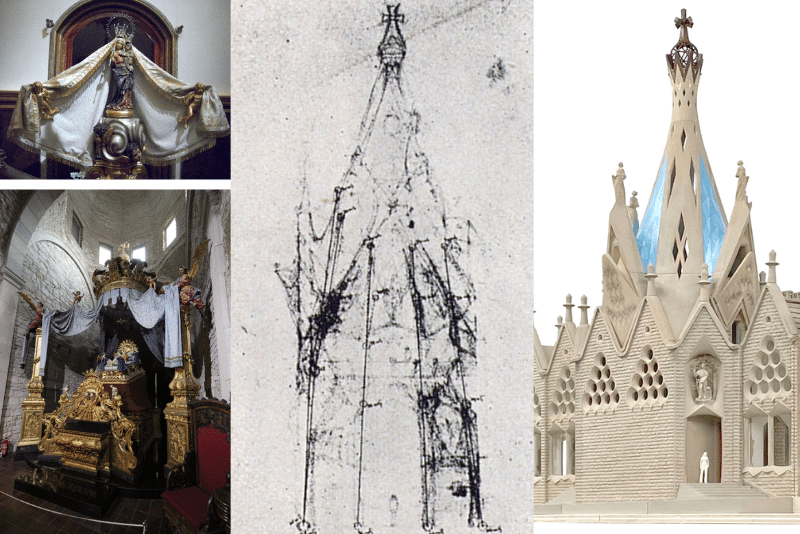
On the top left, the figure of Our Lady of Mercy in Reus; and on the bottom left, the bier of the Virgin of the Assumption by Lluís Bonifaç. In the centre, Antoni Gaudí’s sketch of the Chapel of the Assumption published in Temple magazine in 1929 with the study of the internal force lines. On the right, a virtual view of the completed chapel.
In addition to laying the foundations for the chapel, work is currently under way on some interior sculptural elements, dedicated to the earthly life of the Virgin Mary, and the exterior praising Our Lady of Mercy, patron saint of the architect’s home town of Reus. To create them, the Temple chose the artistic proposals through a contest by Mercè Riba, Béatrice Bizot and Teresa Riba, three sculptors with their workshop in Catalonia.
So, on the inside, Mercè Riba is in charge of the bas-reliefs that depict four scenes from the life of the Virgin Mary: the Presentation of Mary in the temple of Jerusalem, Wedding at Cana, Death of Saint Joseph and Dormition of Mary. Outside, above the two doorways, there will be figures of two saints who dedicated their lives to those in need: Saint Joseph Oriol, also by Mercè Riba, and Saint Roch, by Béatrice Bizot. Teresa Riba is creating the four angels holding up the Virgin Mary’s blue mantle.
But how are they making these sculptures and how do they go from clay to the final stone figure?
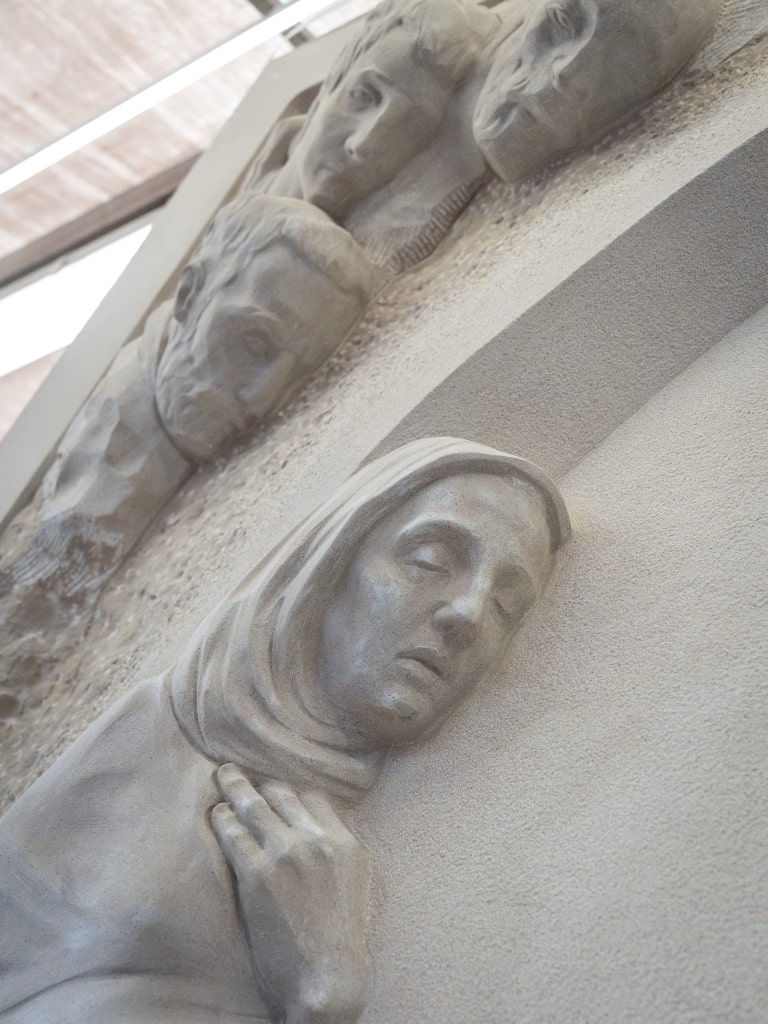
Dormition of Mary: the end of the Virgin Mary’s life on Earth. According to belief, before ascending into Heaven, Mary didn’t die, she fell asleep (dormition comes from the Latin for sleep). The Catholic Church celebrates this event on 15 August with the feast of the Assumption of Mary.
Creating the sculptures
1. Clay model
First of all, the artists create models of their figures in clay or similar materials, following guidelines from the Temple’s Art and Theological Committees regarding the symbolic language.
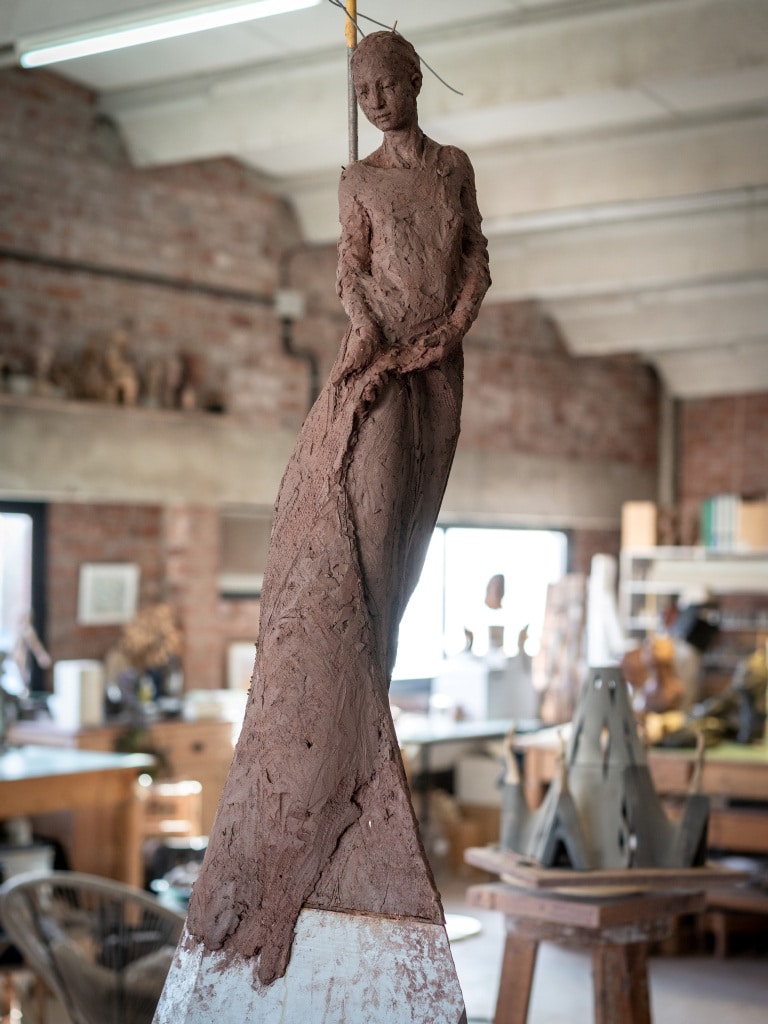
Clay model of one of the four angels for the exterior of the Chapel of the Assumption. By Teresa Riba.
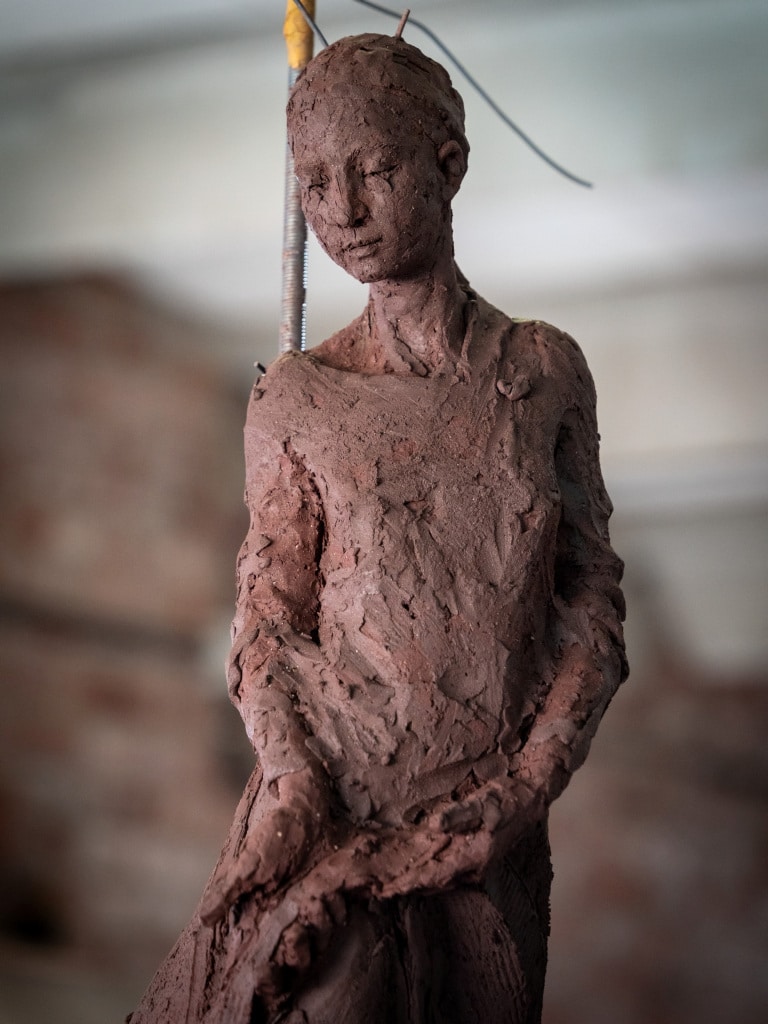
Clay model of one of the four angels for the exterior of the Chapel of the Assumption. By Teresa Riba.
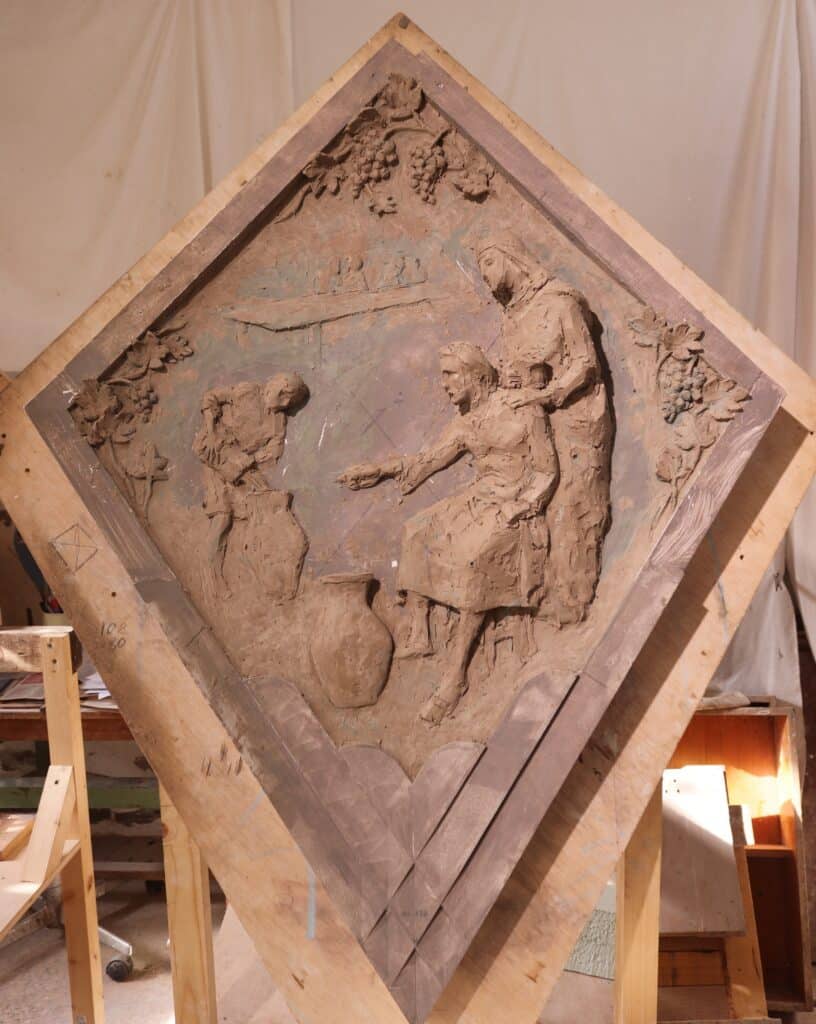
Clay model of the Wedding at Cana altarpiece for the interior of the Chapel of the Assumption. By Mercè Riba.
2. Scanning
Then, a scanner is used to get a computer image from the clay models. This digitalisation process allows the figures to be studied in detail and to see how they will be integrated into the general architectural project. This is when any adjustments are made to ensure the sculpture fits perfectly in the space allotted. This task is carried out by the Sagrada Família projects team, coordinated by architect Xisco Llabrés. When that it finished, the virtual file of the piece is sent to the workshop to be made in stone.
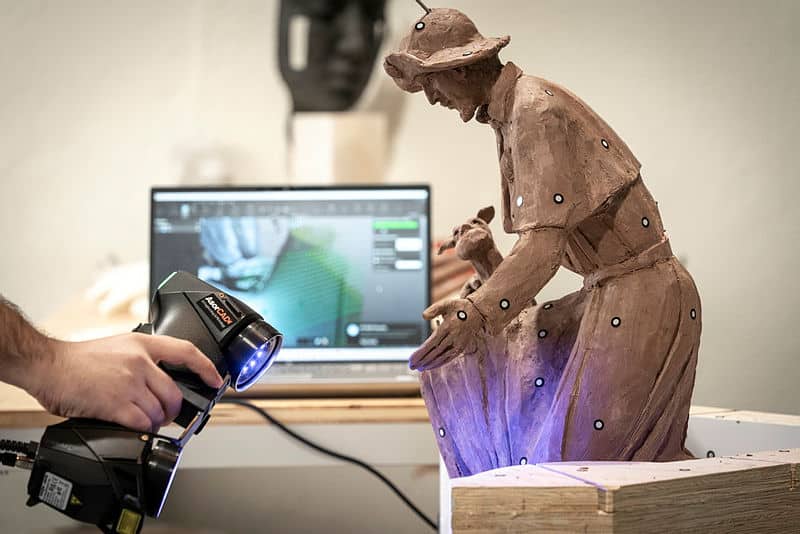
Escaneig del model de fang de l’escultura de sant Roc, de Béatrice Bizot, que s’ubicarà en una de les portes d’accés de la capella de l’Assumpta
3. Roughing out the stone
The artistic proposals are transformed into stone in the workshops of Granits Barbany, a family-run company in Llinars del Vallès that has been working with the Sagrada Família for many years. First, a robot roughs out the piece, meaning it takes a big block of stone and removes the excess to get the basic shape of the sculpture. Computer software tells the machines where they need to be positioned to carve the stone, a difficult, demanding task to do by hand.
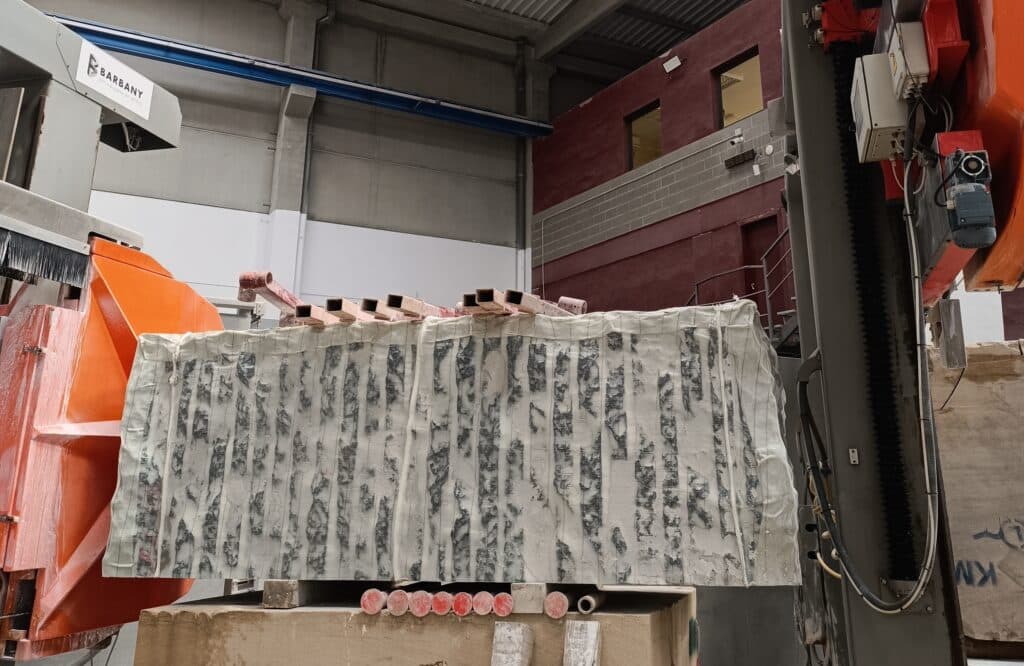
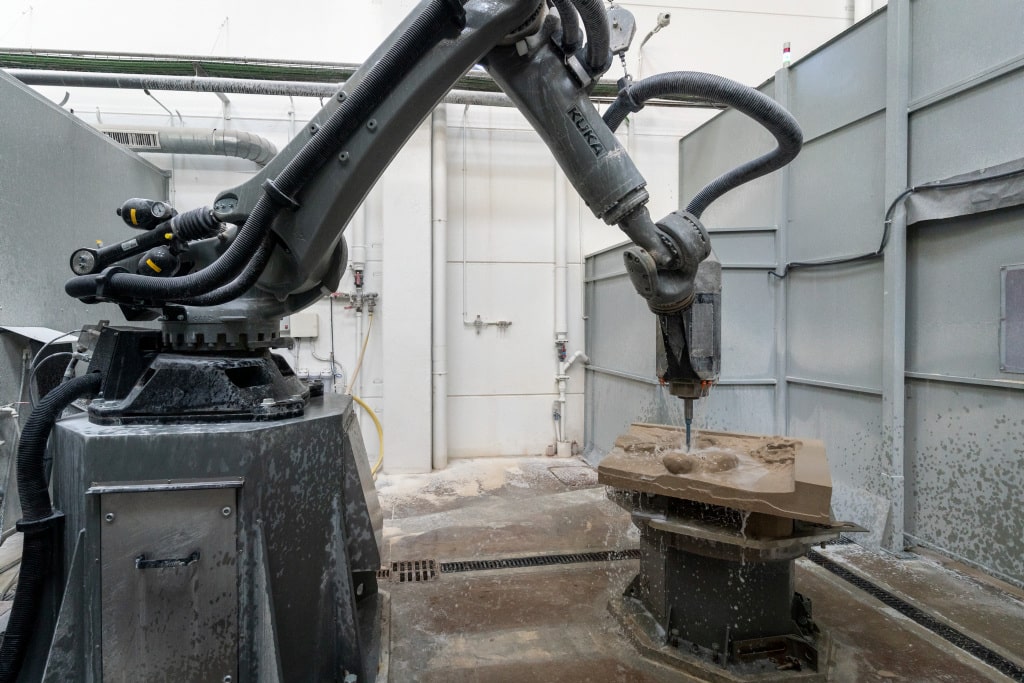
4. Nuances
Once the machines have done their part, it’s time for the hand carving. The stonemasons are in charge of giving the sculptures, which only have a rough finish from the machines, all the nuances and character the artist intended. This task hasn’t changed and is still very necessary, explains the latest generation in the family business Arnau Barbany. Barbany explains that the stonemasons are “like the artist’s hands”.
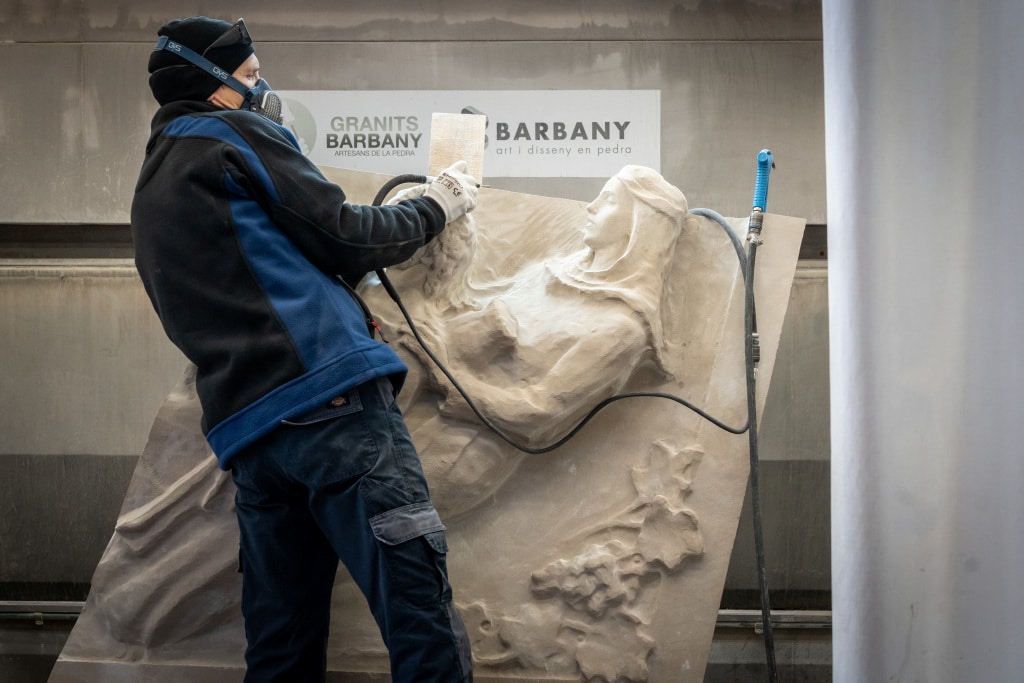
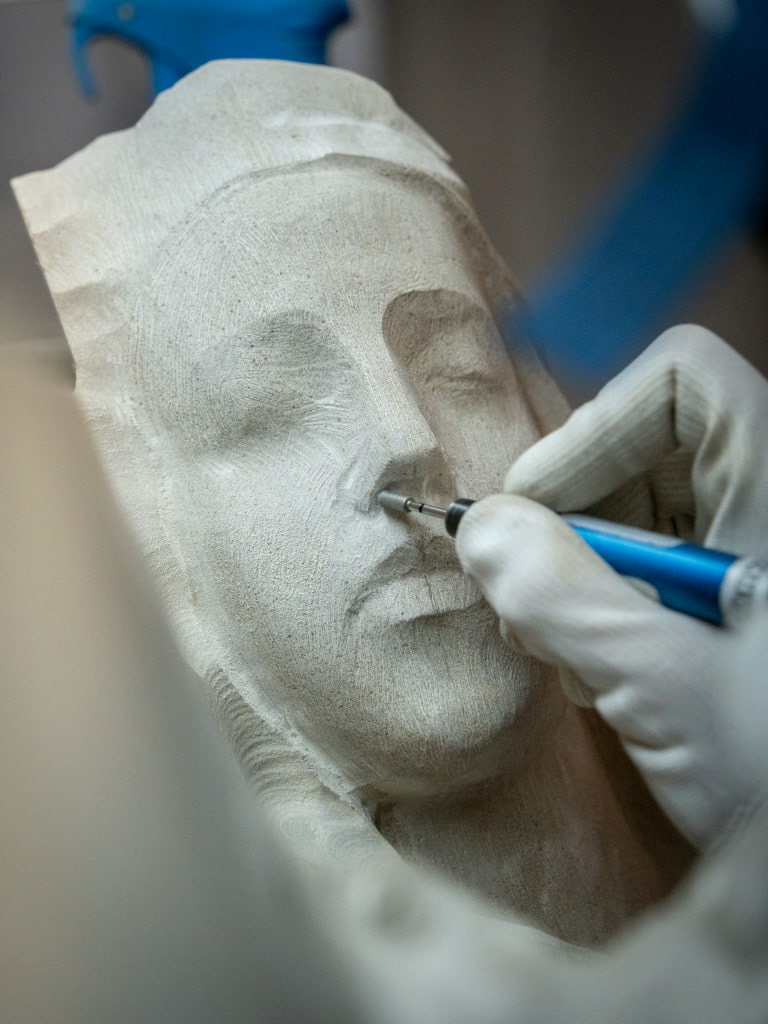
5. Storing until they are put in place
If necessary, the sculptor puts the final touches on the stone and then the finished piece is taken to the external work site in Galera, in the town of Gaià (Bages), to be stored until it is ready to be put in place.
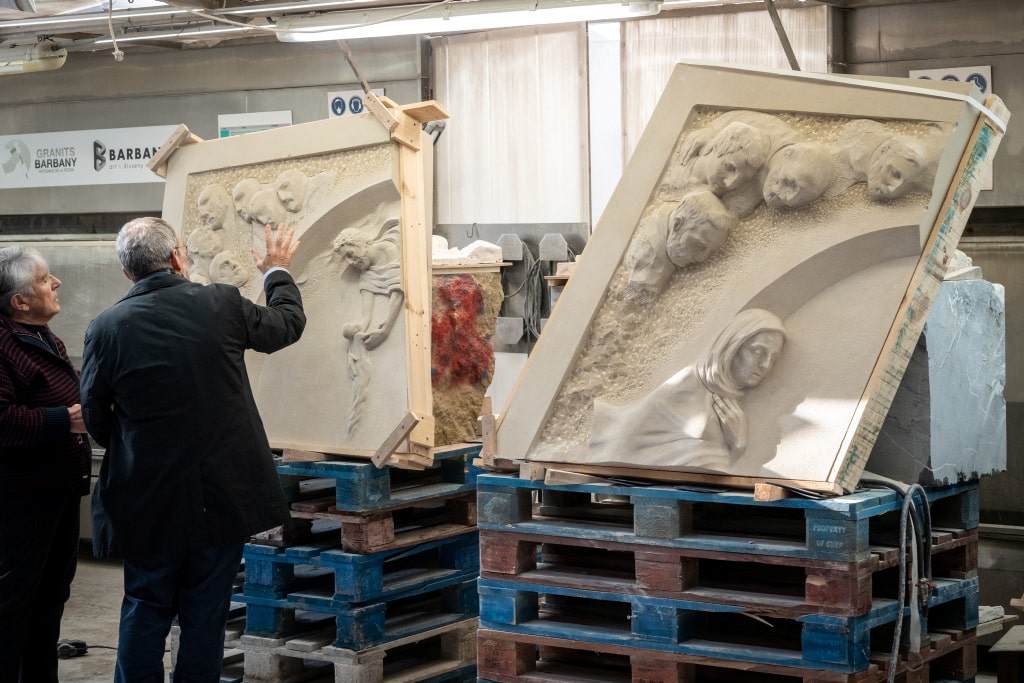
Artists and model makers, essential for testing and correcting
The Temple’s artists and model makers are also involved in creating the Chapel of the Assumption and its sculptures, always working jointly with the architects.
The model makers create scale prototypes of everything built at the Basilica and all the decorative elements. They use Antoni Gaudí’s empirical model, based on testing and correcting to achieve perfection. The architect used this method to experiment with new shapes or see how his proposals would behave when exposed to light, issues that can’t be seen on plans, but in three-dimensional models.
The artists, then, are in charge of adding any manual elements to the models that can’t be made with computer software or 3D printers, such as sculptures or elements on the pinnacles and spires.
Generally, Gaudí had 1:25 scale plaster models made. This size allowed him to study what he was testing in considerable detail. When necessary, however, he had models made to 1:10 scale, which is just ten times smaller than life size. These allowed him to test elements even more precisely. This is how the architect worked and this is still how the Temple is being built today.
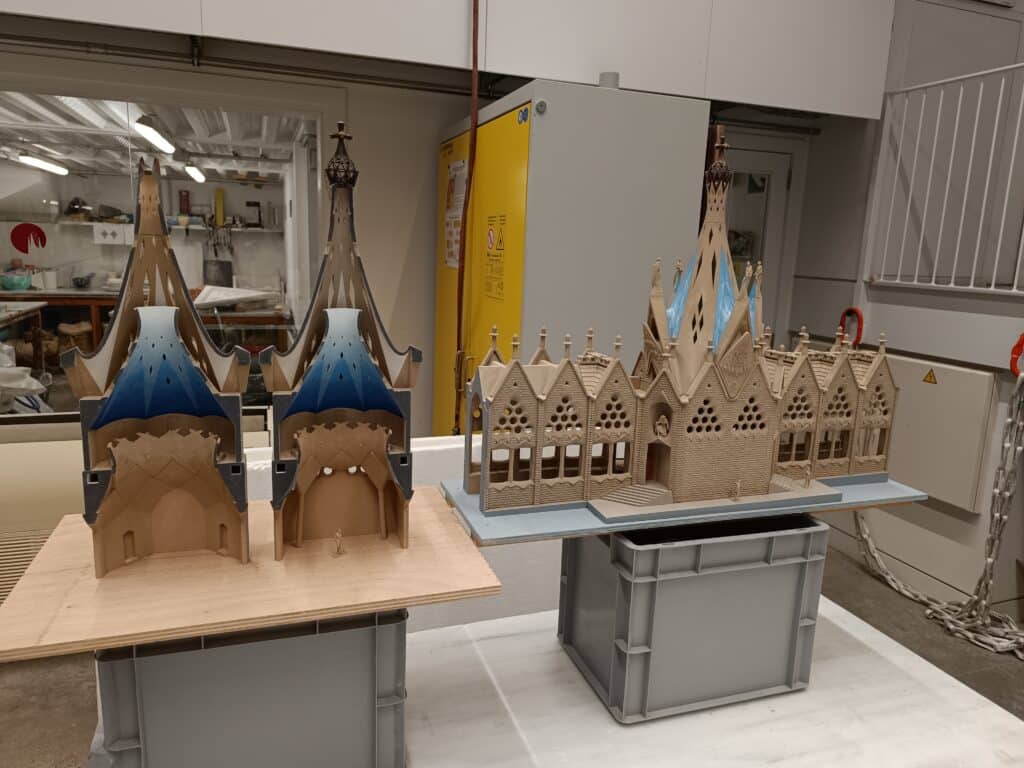

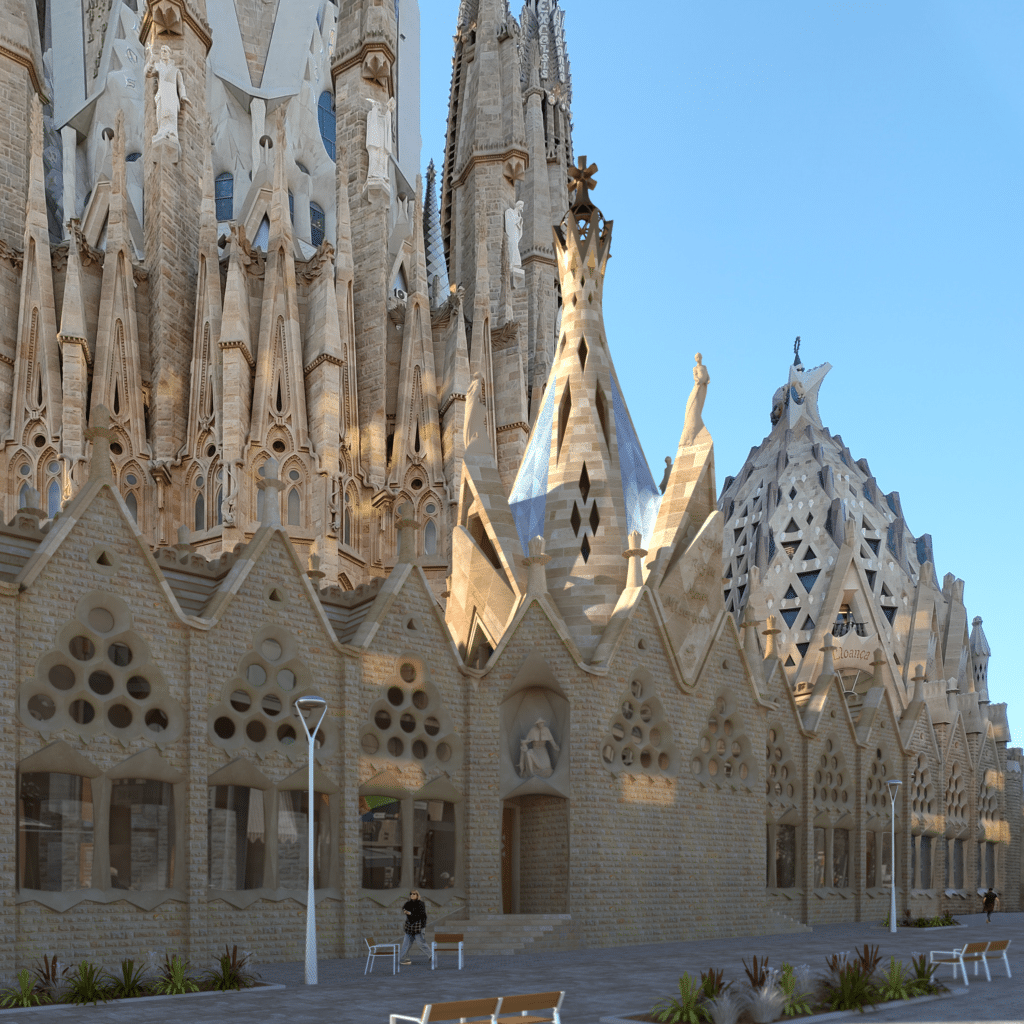
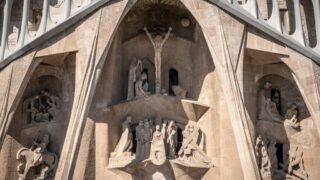
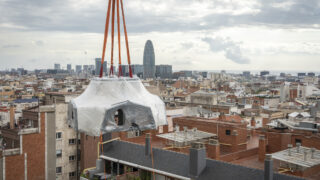
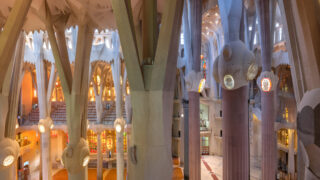
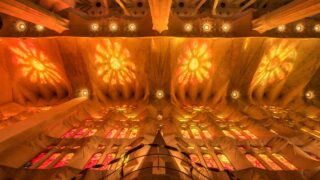
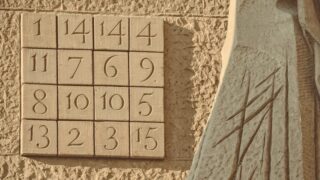
2 comments
Juan Muñoz
Gracias por permitirnos seguir tan de cerca el crecimiento de nuestra basílica.
Maria Biscarri
És increïble la feina, pulcritud i dedicació dels artistes!!!